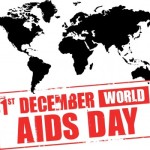Geraldine Ferraro loses battle with blood cancer

Geraldine Ferraro, the first female Vice Presidential candidate for a major US political party has died. Ferraro was a Congresswoman from Queens at the time she was picked by Walter Mondale as his VP candidate in 1984 in his race against Ronald Reagan and George Bush. At the Democratic National Committee Convention, it was a historic moment when Ferraro declared:
“My name is Geraldine Ferraro, I stand before you to proclaim tonight: America is the land where dreams can come true for all of us.”
Her acceptance speech launched eight minutes of cheers, foot-stamping and tears.
The 75 year-old Ferraro died today, at Massachusetts General Hospital, of a type of cancer of the blood called multiple myeloma. She had been battling the disease for the past twelve years. Ferraro talks about her disease and why she went public with her diagnosis in 2001 in an article for Dana-Farber Cancer Center where she received her treatment:
There were three reasons for my going public: One was to heighten awareness about this disease so doctors can recognize it when their patients have blood work done during regular checkups. Another was to raise money from the government, and the third was to encourage faster FDA approval of drugs.
What is Multiple Myeloma?
Multiple Myeloma is a cancer that develops from plasma cells, a type of white blood cell in the bone marrow that make antibodies. Antibodies are part of the immune system which help protect the body from germs and other harmful substances. Each type of plasma cell makes a different antibody. When a plasma cell becomes cancerous, it divides into more cells in an uncontrolled manner. Myeloma cells make antibodies called M proteins and other proteins. These proteins can collect in the blood, urine, and in organs and can cause damage to those organs.
In multiple myeloma, abnormal plasma cells ( myeloma cells) build up in the bone marrow, forming tumors in many bones of the body. These tumors may prevent the bone marrow from making enough healthy blood cells. Normally, the bone marrow produces stem cells (immature cells) that develop into three types of mature blood cells:
- Red blood cells that carry oxygen and other materials to all tissues of the body.
- White blood cells that fight infection and disease.
- Platelets that help prevent bleeding by causing blood clots to form.
As the number of myeloma cells increases, fewer red blood cells, white blood cells, and platelets are made. The myeloma cells also damage and weaken the hard parts of the bones.
What symptoms does multiple myeloma cause?
Sometimes multiple myeloma does not cause any symptoms. The following symptoms may be caused by multiple myeloma or other conditions. A doctor should be consulted if any of the following problems occur:
- Bone pain, often in the back or ribs.
- Bones that break easily.
- Fever for no known reason or frequent infections.
- Easy bruising or bleeding.
- Trouble breathing.
- Weakness of the arms or legs.
- Feeling very tired.
Sometimes tumors can damage the bone and cause hypercalcemia (a condition in which there is too much calcium in the blood). This can affect many organs in the body, including the kidneys, nerves, heart, muscles, and digestive tract, and cause serious health problems.
Hypercalcemia may cause the following symptoms:
- Loss of appetite
- Nausea or vomiting
- Feeling thirsty
- Frequent urination
- Constipation
- Feeling very tired
- Muscle weakness
- Restlessness
- Mental confusion or trouble thinking
How is multiple myeloma treated?
Patients with early myeloma can do well for years without treatment and starting treatment early does not seem to help them live longer. These patients are often watched closely without starting chemo. Sometimes they will be given a medication called bisphosphonate to help protect their bones.
In those patients with more advanced stages of myeloma, a variety of treatment options exist, and may be used in combination. These include:
- Chemotherapy
- Targeted therapy
- High-dose chemotherapy with stem cell transplant
- Biologic therapy
- Radiation therapy
- Surgery
- Plasmapheresis(filtering of the blood to remove excess antibodies)
For more information about multiple myeloma, click here to go to the Resounding Health Casebook on the topic.



























0 comments